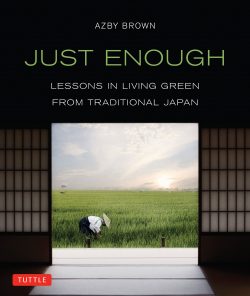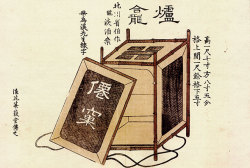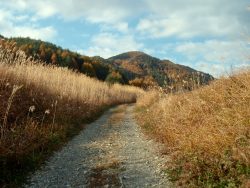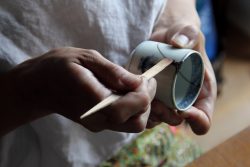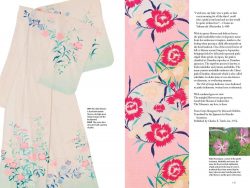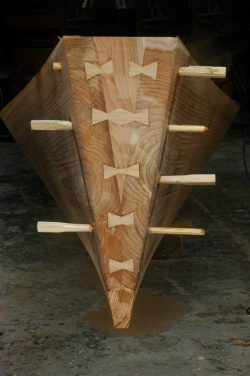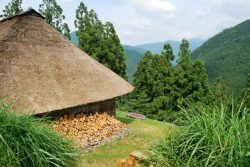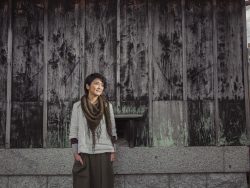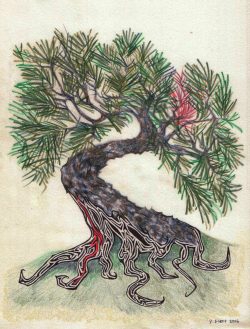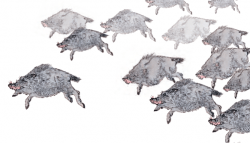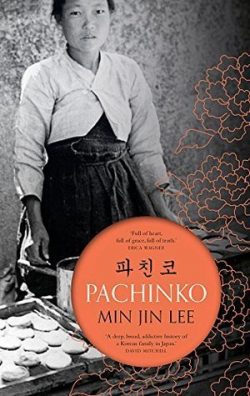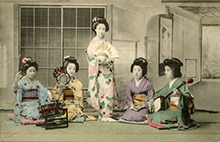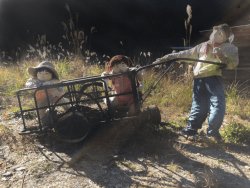Posts Tagged ‘Japan’
KJ Summer 2018 Reads: Titles from Tuttle
As part of their 70th-year anniversary celebrations, KJ has teamed up with Tuttle Publishing, the Asia specialist, for this four-part series.
Read MoreBaisao, The Old Tea Seller: Life and Zen Poetry in 18th-century Kyoto
“I’ve got the whole universe in this tea caddy of mine.”
Read MoreInto the Hills
Up into the Northern Hills,
up the slender, winding road
to the last bus stop; get out, walk
the narrowing valley to the end,
climb steep stone stairs.
Pause there for a cup of tea.
Mio Heki: Kintsugi Artist and Urushi Master
“I see urushi as a way to connect ourselves and our culture with nature in so many ways. Because urushi and kintsugi art is all natural, it is a good way to remind ourselves that we are all part of nature, being pieces of our universe.”
Read MoreInterview with David Cozy, KJ Reviews Editor
“What I am most proud of as an editor is that I have expanded the stable of writers who review for us, both bringing in talented people new to KJ, and also enticing those who’d done other kinds of writing for KJ over to the reviews section.”
Read MoreKimono Design: An Introduction?
This is an extremely beautiful book. Every page explodes with color and pattern: exquisite embroidery, wonderful hand painting, complex dyeing, evocative renditions of natural motifs. An astonishing variety is presented.
Read MoreAn Apprentice Boatbuilder in Japan
I returned to Japan expressly to interview one of the boatbuilders I met on that first trip. Mr. Koichi Fujii was the last builder of taraibune, or tub boats, and with the help of an interpreter I did my best to begin documenting what he knew.
Read MoreKoya Abe: Selling Vintage Records in Tokyo
Koya Abe spent most of the six-minute-long 2011 Tōhoku earthquake keeping his 78rpm records from falling off the shelves. The delicate collectibles are stored in open-mouth crates mounted on the wall of his Tokyo record shop.
Read MoreChikamichi: The Shortcut
Subsistence farming in the mountains is not usually conducive to amassing any great wealth. But then I looked again at the houses and fields, a whole village created from nothing more than wood, bamboo, stone, clay, vine, straw, grass, and the knowledge of how to use them…
Read MoreMatsumoto Sachiko: Bringing Japanese Crafts to the World
Matsuyama Sachiko is the founder of monomo, a business linking Japanese craftspeople with an international audience and encouraging cultural inspiration.
Read MoreGiant Bonsai
“Cut it down. You’ll have a better view of the rhodies,” one neighbor suggested.
But why? I loved seeing the fir’s textured bark arcing across the backyard and then shooting up to the sky.
“This is the most beautiful tree I’ve ever seen, “ my mother said. “It’s a giant bonsai without wires.”
Read MoreAmerican Bonsai: Life by a Thousand Cuts
My father-in-law was a flyer. A man of the air and sky. A man of dreams and bravery, of duty and responsibility. He was fiercely loyal to family and country even when they were not so loyal to him.
Read MoreKJ x Tea Life Audio
Tune in to TeaLife Audio, on everything Cha-no-yu!
Read MoreShokunin
The Shokunin Project is an ethnography of mastery— a study of the obsession and commitment to excellence it takes to dedicate one’s life to the pursuit of perfection.
Read MoreOstrich Defies Containment
Adventures and fates of seven birds freed in the town of Okuma, Japan, following the Daiichi nuclear reactor meltdown in Fukushima, 11 March 2011.
Read MoreA House Living with Tea
“Inspired by tea, the housemates show us that it is possible to live creatively and mindfully in this modern day world. It seems fitting that such a place exists in Kyoto, a city that epitomizes the juxtaposition of old and new.”
Read MoreSmall Buildings of Kyoto
Small Buildings of Kyoto features 100 images of the quaint homes, businesses, workshops, as well as the occasional neighbourhood shrine and teahouse, that make up the fabric of Japan’s ancient capital.
Read MoreEngineering the Japanese Islands
“Like all peoples on the planet, Japan has a complicated relationship with the natural world that’s shaped by religion and economic behavior and political practices, but certainly the notion that the Japanese enjoy a greener national philosophy is misguided. It does not hold up to historical scrutiny.”
Read MoreA Universal Korean-Japanese Story
Lee opens this epic narrative of the lives of Korean immigrants to Japan in the fishing village of Yeongdo—“a five-mile-wide-islet beside the port city of Busan”—in 1910, the same year that Japan formally annexed Korea. She concludes it in Tokyo in 1989…
Read MoreThe Japanese Postcard Collection of Graham Bowyer
“Being interested in gardens in Japan, I decided to investigate whether old picture postcards of Japanese gardens were also available and this has developed into a collection of more than 500 mostly from the period 1900 to 1930s.”
Read MoreAyano Tsukimi’s “Kakashi-no-Sato”
Around 15 years ago Tsukimi made a scarecrow (kakashi) to protect her vegetable garden, basing it on her father’s appearance. Her neighbors enjoyed this whimsical inspiration, and since then she has continued to make these figures, many of them based on present or former village residents…
Read More
